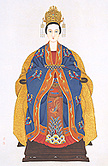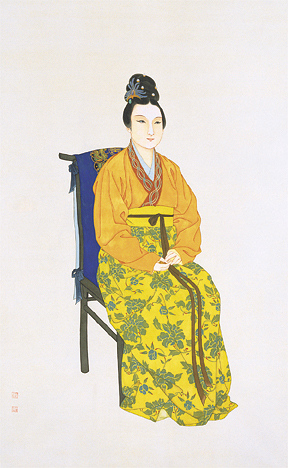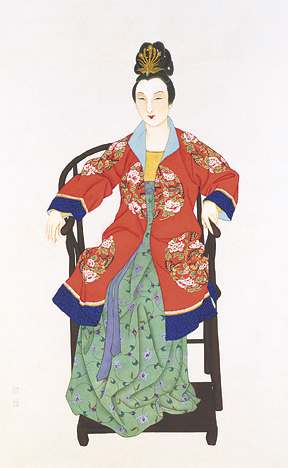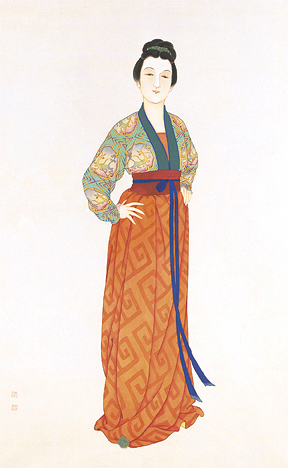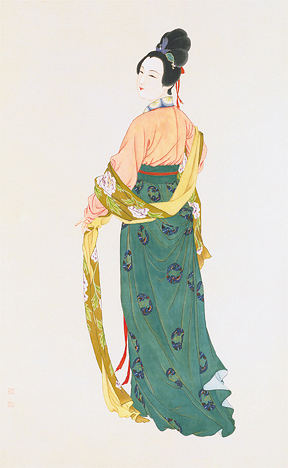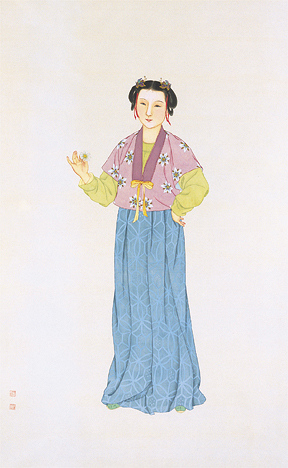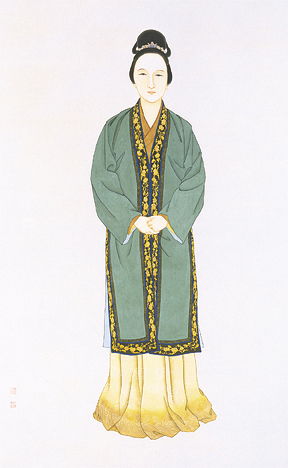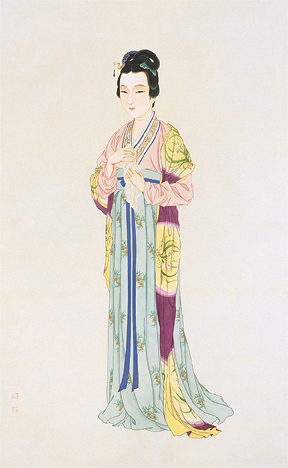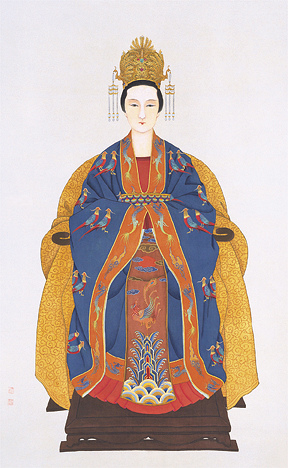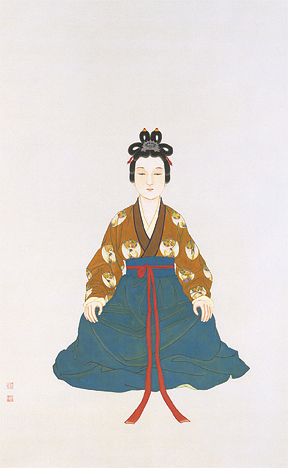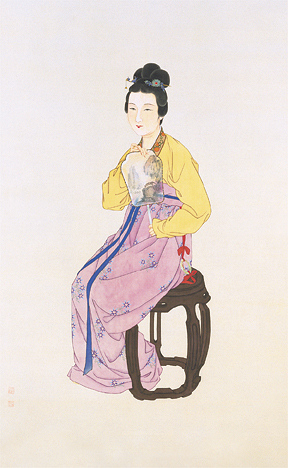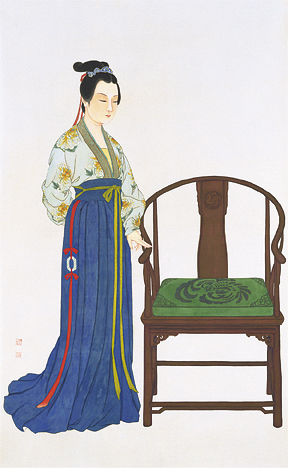October 15 – December 17, 2000
In masterful traditional Chinese style, artist An Ho has created twelve life size images of the major female characters in the 18th century Chinese novel, The Dream of the Red Chamber. This legendary work by Cao Xueqin is considered by many to be the finest Chinese novel ever written. Literary scholar Dr. Kam-ming Wong has described the novel as “so rich and complex in its depiction of traditional Chinese society and culture that more than one scholar has characterized it as an encyclopedia of Chinese civilization.”
Breaking with the traditionally impersonal style of Chinese fiction of the day, the author rather reveals the private realities and intimate experiences of his characters. The work is also unique in that much of the story is told from the feminine perspective — this at a time when Chinese culture was primarily defined by male-dominated Confucian patriarchal norms. In this series of paintings, An Ho has masterfully captured the essence of twelve of the novel’s most richly developed female characters.
Alongside An Ho’s captivating life-size figures, this exhibition also featured the exquisite hand-crafted furniture of Henry Lautz. Mr. Lautz’s work is rooted in the traditional Chinese style and techniques of the Ming Dynasty period.
Select Highlights:
About An Ho
An Ho, also known as Wen-ying, was born in 1927 in Beijing, China. Her father, a prominent journalist, and her mother, a painter, were senior members of Sun Yatsen’s revolutionary movement. Her father was also active in China’s “Five-Four Movement,” an important effort both to modernize the Chinese language, and to improve human rights including women’s rights. Her maternal grandfather served as Vice-Governor of Manchuria from 1949 until his death in 1970.
In 1944, at age 17 An Ho was introduced to and became the student of the esteemed Chinese artist, Pu Ru. The most highly regarded of China’s scholar-painters, Pu Ru was a member of the Qing dynasty royal family, and cousin of Pu Yi, the last Emperor of China. An Ho became Pu Ru’s most distinguished student, studying with him for seventeen years. Her training included the study of literature, calligraphy, and practice with the painting techniques of the Tang (618-906 A.D.) and Sung (960-1279 A.D.) Dynasties. Though much detail of these techniques had become lost over the centuries, An Ho, through many years of research, was able to re-establish this art form — always considered to be a pinnacle of Chinese art. Today she is the only living artist who can work in the Tang and Sung Dynasty styles.
In 1952 An Ho’s work began to be noticed by the Chinese art world. In 1954 one of her paintings received the Gold Medal in the Second Asian Games Art Exhibition held in the Philippines. In 1962 she was nominated to membership in the Society for Chinese Painting. Her works have been exhibited in China, Taiwan, Germany, Italy, France and the United States. In 1971 in Taiwan An Ho had her first one-person show, including over 100 paintings. In 1977 she won her first critical acclaim in the United States through one-person shows at St. John’s College and the Art Institute of New York. In 1983 she was elected to the Chinese Cultural Association, and in 1994 she became the first woman artist to be given a one-person show in Taiwan’s National Historical Museum. The show broke all of the Museum’s attendance records. Her paintings are in the permanent collections of several museums and private collections in both the Far East and the West.
In 1977 An Ho and her family moved to Atlanta, Georgia, where she now resides. An Ho’s work is represented by China 2000 Fine Art, New York, New York.
About Henry Lautz
Henry Lautz’s introduction to the art of woodworking began in 1946, when at the age of five he began to learn basic skills from his great uncle, a German-trained cabinetmaker. He received his first exposure to Chinese wood craftsmanship through items brought back to America by family friend Dr. George Larrigo, who had spent fifty years as a missionary in China. At a young age he developed a special interest in the wood furniture of the Ming Dynasty, and subsequently studied and integrated those very specialized and demanding woodworking techniques into his own work.
Lautz creates furniture in a free-flowing way, allowing the wood grain patterns and shadings and a natural evolution of the piece to shape the final work. He begins each piece with a series of sketches, sometimes also utilizing full-scale mock ups to perfect the design. Each piece of wood to be used is then carefully selected, and its natural patterns and shadings brought out by careful resawing. He uses reversible glues and finishes that leave the look and feel of the wood clear and accessible, allowing each piece to develop its own beautiful patina. Henry Lautz’s introduction to the art of woodworking began in 1946, when at the age of five he began to learn basic skills from his great uncle, a German-trained cabinetmaker. He received his first exposure to Chinese wood craftsmanship through items brought back to America by family friend Dr. George Larrigo, who had spent fifty years as a missionary in China. At a young age he developed a special interest in the wood furniture of the Ming Dynasty, and subsequently studied and integrated those very specialized and demanding woodworking techniques into his own work.
Henry Lautz is the son-in-law of An Ho, and also resides in Atlanta, Georgia.


